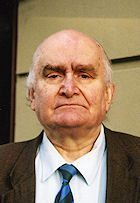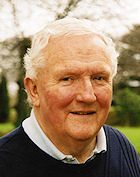Track 1: Maurice O’Connell outlines the military career of James Francis Hickie from Killelton in North Kerry. The connections with the O’Connells of Lakeview, Killarney, and the Deasys of Firmount (Cnoc na Faire), Tipperary, are also outlined. William Bernard Hickie (known as WB to his family) was a son of James Francis Hickie and great-uncle to Maurice, who details the careers of WB’s siblings and his brother-in-law Henry Hugh Peter Deasy, soldier and author of In Tibet and Chinese Turkestan. Henry’s son, Rickard Deasy, broke with family tradition by joining the Irish Army for WWI. He later became President of the National Farmers’ Association. Track 2: Maurice outlines in some detail the military career of W. B. Hickie, who saw action in the Second Boer War and in WWI, as well as occupying various positions in the British garrison in Ireland. He explains the reasons why WB replaced Sir Laurence Parsons as commander of the 16th (Irish) Division. He gives a brief political history of the Esmonde family from Wexford and their link with the Hickies. The route march of the Divisional unit and its departure to France is described. Initially its leadership was entirely Catholic and Maurice refers to the writings of Tom Kettle about this period. The frequency of the mention in dispatches to the War Office is remarked upon. Over the course of the war the Irish membership of the Division became diluted due to contemporaneous events, including the reduction in Irish voluntary entlistment due to the 1916 Rising, the anti-conscription campaign and the rise of Sinn Féin. Maurice highlights the survey of officers at the Curragh and their willingness or otherwise to support Carson in 1914 and he explains that its outcome affected WB’s career progression. He comments that those in control found it difficult, or even impossible, to understand that one could be Irish and also be loyal to the British Crown. Maurice describes WB’s life after the war. He retired to the family home at Terryglass and became involved with the British Legion for the remainder of his life. In 1925 he was elected a member of the Irish Senate and spoke there about the need to support war veterans. Maurice remembers him as a very old man and recalls his magnetism and charisma, and emphasises his sense of Irishness by recounting the story of the shamrock shoulder flash on the uniform and the motto ‘Semper Fidelis’ which had been the motto of the Irish Brigade under the French. He believes that WB’s superiors could not understand how one could serve both sides and he also explains that WB publicly criticised the less desirable activities of the Crown forces in Ireland after WWI. The family homes were never attacked by the IRA, although an attempt was made to raid Lakeview in Killarney for arms. The background and layout of the graveyard attached to the Church of the Immaculate Conception at Terryglass, Co. Tipperary, where the Hickie family plot is located, is described. He explains that WB never married and family stories about dalliances with females are retailed, including his meeting with Baroness Mary Vetsera on a sea voyage to a military posting in Egypt They met frequently at social gatherings in Cairo that winter. Shortly afterwards, she was found dead with her lover, Crown Prince Rudolf of Austria at Mayerling, outside Vienna. WB lived at Slevoir, Terryglass, and following financial difficulties he encountered, and a division of the Slevoir estate, Maurice’s maternal grandfather, H. H. P. (Peter) Deasy, returned to Ireland to take over part of the estate at Firmount where the Deasys live today. Track 3: Henry Hugh Peter Deasy (known as ‘100 HP’) had retired in the 1890s from the British Army, but like many others, he re-enlisted with the rank of Major and was put in charge of the logistics of victualling the British Army in Ireland. He and his family lived in Leeson Park in Dublin during this period and Maurice says that he was certainly around Dublin Castle during the Rising. According to a family story, H. H. P. Deasy found the telegram reprieving “Edward” de Valera from the firing squad lying on a desk in the castle and as an act of bureaucratic zeal, ensured that it reached its destination in time to save Éamon de Valera from execution. Maurice explains that General John Maxwell, military governor of Ireland, decided in the latter part of 1916 that Deasy was suffering from neurasthenia. Maurice suspects that his grandfather was being too punctilious and was slowing things up. He was sacked by Maxwell and details of his successful fight for reinstatement, with full rank and pension rights, is contained in the archives. Maurice feels that perhaps Deasy suffered some retaliation when he was sent to the Labour Corps (later Pioneer Corps) which performed light engineering duties. Later he was Port Master for one of the ports on the English Channel with responsibility for getting food to the lines. His return to Ireland after the family crisis is discussed.

Maurice O’Connell (b. 1936) (Part 1)
 Maurice O'Connell (b. 1936) (Part 2)
€10.00 – €20.00
Maurice O'Connell (b. 1936) (Part 2)
€10.00 – €20.00 William Vincent O'Sullivan (b. 1943 )
€10.00 – €20.00
William Vincent O'Sullivan (b. 1943 )
€10.00 – €20.00Maurice O’Connell (b. 1936) (Part 1)
€10.00 – €20.00
Additional information
| Type: | MP3 |
|---|---|
| Audio series: | The Irish Country House and the Great War |
| Bitrate: | 128 kbps |
| Download time limit: | 48 hours |
| File size(s): | 15.71 MB, 48.90 MB, 34.08 MB, 12.78 MB, 6.53 MB |
| Number of files: | 3 |
| Product ID: | CHGW01-20 |
| Subject: | Sir William Bernard Hickie and his career in the British Army |
| Recorded by: | Maurice O'Keeffe – Irish Life and Lore |





